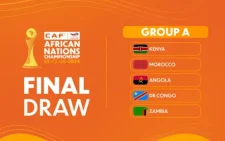No much achieved in play 75% local music campaign

The cry to have Kenyan broadcasters play majorly local content has never been louder. But as Jasmine Atieno writes, the calls to have the stations give 75 per cent airplay to the Kenyan music content remain to be just that
Recently, comedian Eric Omondi went on a hunger strike by caging himself outside Parliament building with an aim to compel Members of Parliament to enact a law that would see local broadcasting stations play 75 per cent of Kenyan content. The funny man, whether genuine or otherwise (the jury is still out), has in the past year been on an offensive in fighting for the #PlayKe. However, music from foreign countries such as Jamaica, Nigeria, South Africa and Tanzania has continued to thrive in Kenya, as radio and TV stations, and deejays give it a huge chunk of airplay.
With its grand entry into the music circles in 2019, Kenya’s gengetone raised the hopes that the country had finally birthed a sound that would go toe-to-toe with the rivalling foreign genres, which have for many years threatened the very survival of the local sounds. A few years down the line though, gengetone (just like its predecessors) risks being pushed into the oblivion unless concerted efforts are made to save it.
Some people would argue that the young sound never got enough support to attain its full potential. Recently, some industry players held a two-day summit in Kisii county, where four producers were tasked with creation of a ‘national sound’. Also recently, another summit dubbed ‘Gengetone to the World’ was held in Nairobi, where music industry players discussed issues surrounding monetisation, branding, touring, and streaming, all in a bid to try to find a path for the Kenyan sound.
Changed landscape
Until his retirement from the music sector in 2018, celebrated veteran music producer Tedd Josiah was a colossus in the very depths of the music business, having dipped himself in the industry in the 90s. In that duration, Tedd worked with many popular Kenyan performers such as Kalamashaka, the late Poxi Presha, Suzanna Owiyo, late Achieng’ Abura, Abbi and Didge, among others. But as long as his hits ruled the airwaves then, he reckons that it was a real battle shaping the local urban music market.
“The difference between us and the young artistes of today is that we understood what it took and we did it. They talk and complain so much on social media, but will never walk the talk that is needed. It took trekking, sometimes long distances to distribute our music tracks, visiting the said radio stations over and over again. Most of the artistes today rant on social media and are not willing to do half of the actual work by getting their music mastered properly, shoot quality videos and all,” shares Tedd.
At the same time, he blames the media for the struggling stature of local creative content.
“We need to take back our airwaves. We have allowed the slave and colonialist mentality to permeate the industry, and in this way, we have sold our airwaves, culture, and music for what the other cultures offer us. What the Kenyan media has done is turn the listeners into slaves of foreign content, so much that the music culture is slowly diminishing. Many people, especially young generation, don’t even know the different musical instruments and the sounds. On the other hand, this is the trend that Nigerians and Tanzanian artistes are using to stay on top of their game by fusing their cultural sounds, using the traditional musical instrument and modernising it. And our media stations are making them look like they are better than us. What people consume through media is what they form identity around. They listen to foreign music and movies and they start talking like them and picking up their trends,” he adds.
Artiste manager Majestic Trends shares that financial muscles dictate a lot in making a brand. “Airplay is a big challenge for both established and up-and-coming artistes not only in Kenya, but also in other countries such as Jamaica. It’s not an even playing field because we’re competing with record labels or other artistes with management teams who have financial muscle. They have budgets for promos, which include paying radio managers and those in charge of curating playlists on radio. So, despite protests or even policies regarding the 75 per cent airplay for local content the field won’t be even.
The radio space
Community radios in Kenya have been tasked to tell stories to educate and build the community. In Kenya, there are about 40 community radio stations, and while it’s easier for them to play even above 85 per cent vernacular content, it’s not the same with commercial radios that are focused on profits.
Radio manager Tom Japanni believes that legislation would not be the best way to go in ensuring the intended percentages are played in the local stations. He feels that there are many dynamics when it comes to the running of radios, and that when it comes to airplay, it’s all about the attributes that define and inform the content played by a station.
“For instance, I currently manage four radio stations that play diverse kinds of music content. How can I make sure 75 per cent of all the four stations I run is local music? I have a target audience and I am serving taste of my listeners. It won’t make any sense pushing content down people’s throats. Let’s remember that art is free and you cannot put rules on it. You have to give people the music that they want to listen to so that they know where they can find that kind of music when they are looking for it. I understand that there is desperation in the industry, but there is better ways than legislation,” argues Japanni.
Msenangu FM radio head Teddy Tinga tells Spice that he radio station plays 70 per cent Mijikenda and 30 per cent Swahili music content from the larger Eastern Africa. However, he believes the grievances about media stations not giving local music enough airplay are misdirected and should be reviewed if any success is to come from it.
He says: “As a radio investor, I have to focus on what the listeners want. We don’t really rule the airwaves or decide and definitely nobody wants to experiment with their business. It’s mostly the listeners who shape radio content; they make the requests as well, so it is what they want. It is not a bad agenda that they want more airplay from what they are currently getting, but as a businessman, the customer is always right. So, they should direct this to the customers. Let them direct this energy to the listeners not radios. Because what’s trending just sells.”
While it might seem as unachievable goal, Roots Radio’s Stitchy Steven is making it his target to turn the airwave into 100 per cent Kenyan reggae music hub. “It is an initiative that we are cultivating, and it is solely for Kenyan reggae music. Seventy five per cent airplay is definitely a move that we are supporting. It would be good to hold a workshop and bring together all the stakeholders, so that we can find a way forward towards this. As much as commercial radio is more focused on profits, they can pick even a day to play 100 per cent homegrown music across the genres,” says Stitchy.
This is not the first time these stakeholders are calling for such meetings, but as he intimates, invitations to the radio investors are normally snubbed, or translated to attacks. On the other hand, music publicist and TV presenter Agnes Nonsizi is convinced that the cry for fair local content airplay has gone on for far too long and need to be settled once and for all.
“We cannot keep going around mass action because this is not new, we have done this over and over again, but it has not yielding much. There are so many gatekeepers; it’s about time we had a real meeting with investors, so they can tell us why they don’t want to play Kenyan music. Can we once and for all find a way that good music will reach the stations? We can’t put the responsibility solely on community radios and leave commercial radios out of it because they don’t want to risk losses. If that’s the case are they even paying royalties; are they compensating Kenyan artistes for their content?” she poises.
She adds, “Community radios play vernacular music. This is why we have not heard any complaints from them, but for pop music it is definitely an issue. At the same time, artists are not taking the necessary action to make these things happen. Eric Omondi is not a musician, therefore, it’s not up to him to do all that he is doing.”
On the decks
While the radio stations receive the largest pie of the blame on airplay, deejays are not exonerated either. While some quarters might feel different on content value, others have stood strong in giving Kenyan content the much-deserved space. One of these includes DJ Elton Ndeto, founder of One Calling International.
“Yes, Kenya has got content and we don’t need to be pushed to play Kenyan music. What’s happening is that we have lazy presenters and deejays who don’t want to do their work by researching. Nowadays, we get new music on a daily basis. I believe deejays have the power to control the airwaves because they go out to search for trending music elsewhere and introduce it to the fans, and so they should do the same with local content,” says the spin doctor.
Ndeto adds in conclusion that the media should not risk its profits by playing content that the consumers don’t want. He says, “Reason people are not listening to local content is simple; Media houses fear introducing new content to their audiences. They fear change. Our artistes, especially Kenyan reggae artistes just like their Jamaican counterpart, have their songs on all social media platforms. It’s just a matter of deejays and presenters to do their work.”















